A Perfect Blend of Old and New--New Life for Taipei's Old Homes
The former is a century-old district that is home to Taiwan's oldest hot springs community, and the latter an onsen hot springs town that was founded more than a millennium ago. Life in both moves at a snail's pace compared to the typical urban setting. On a stroll among the old markets, hotels and barns that dot these communities, you can see how proud local residents preserve their way of life as they seek to rejuvenate old homes. Beitou Old Street (北投老街), which refers to Zhongzheng and Datong streets along with the areas surrounding Beitou Market (北投市場), includes a section of Zhongzheng Street beside MRT Beitou Station (捷運北投站) that was once the district's most flourishing area. Traces of this period remain, from brick and tile ranch style homes to tiny verandas that connect buildings and streets. The intimate nature of this setting contrasts sharply with the tall buildings that surround it. As we walk toward new urban zones, the increasing crowd density is due to Beitou Market, the largest publicly owned traditional retail market in the city. In recent years, a handful of popular food vendors have acted as a catalyst, drawing more and more customers. After ascending to the second floor and trying Ai Zai Cai (矮仔財) braised pork with rice and pork rib soup, A-Po (阿婆) ding bian cuo (鼎邊銼), a soup that contains steamed rice paste, pork, shrimp, and other ingredients, and sushi with oyster soup, we return to ground level to wash our meal down with chilled black tea at Cai Yuan Yi Drink (蔡元益紅茶), known across Beitou for its fire truck red sign. We then head to the newly opened foot spas at Xinbeitou's Fuxing Park ( 新北投復興公園) for physical rejuvenation. Upon opening in 1921, the Kazan Hotel (佳山溫泉旅館) made an immediate splash as Beitou's most luxurious hot springs resort. Constant renewal lay in its future, as it served as a guesthouse for kamikaze pilots, underwent ownership changes following retrocession, and became a privately owned museum. It was finally renovated into the cultural center it is today. Dubbed the Beitou Museum (北投文物館), it offers a combination of cultural activities, arts and kaiseki meals distributed among the hotel's Japanese-style rooms, villas, and a 60-seat banquet room on the second floor. This traditional Japanese space is one of the best settings outside of Japan to experience authentic kaiseki or sado (tea ceremony) and wagashi (Japanese confectionery). In Japan, sado is a composite art form of ikebana (flower arranging), kodo (incense burning), ceramics art, arts and crafts, architecture, landscaping, religion, and philosophy. The museum has welcomed famed Japanese Urasenke tea ceremony school instructor Seki Syuki to visit Taiwan to discuss how harmony enhances the ceremony of tea. And what would Japanese tea be without wagashi? Every month the museum conducts do-it-yourself activities to teach visitors how to make these traditional confectionery and snacks. 14:30-15:30 A Mountain Village Bounces Back With Sweet Treats At Yangmingshan Shanzaihou (山仔后), more than a hundred U.S. military dormitories compose a unique 1950s settlement that opened when U.S. military consultants arrived in Taiwan on the heels of the Korean War. While these soldiers lived at both Shanzaihou and along Section 7 of Zhongshan North Road, greater numbers and higher-ranking officers settled at the former. They mostly inhabited southern U.S. ranch-style homes equipped with features that Americans were accustomed to, such as fireplaces, chimneys, and large lawns, which contrast sharply with the narrow, jam-packed homes familiar in most parts of Taiwan. Last year, when the city government launched its "old house cultural movement," it encouraged a northern coast confectioner to rent five of these homes. The first home became Coffee Years, a 1950s-style cafe that specializes in U.S.-style pies and tarts. The second, Happy Cake, is a bakery that specializes in cupcakes, Swiss rolls, and herbal teas. Seated in these shops, the comfor ting sound of jazz music is accompanied by the crackling of a warm fire. Enjoy the views of the natural environment outside and the nostalgic setting inside, while losing yourself in the rich music of Louis Armstrong. 17:00-18:00 Classic Taiwanese Food Served in an Old Japanese Home Concealed in an alley on Section 2, Zhongshan North Road is a restaurant that specializes in Taiwanese haute cuisine. Housed in a 1932 Japanese-style building that originally was the residence of a Japanese doctor, the local enterprise that bought and refurbished the building has preserved not only its historic character but also Taiwanese culinary and aristocratic traditions that were in danger of being lost. Everything was carefully planned, from the interior design to the food. Take the chai boey soup, for example, which continues a tradition of the head chef combining ingredients such as five willow fish, braised fish, stewed cabbage, and pickled vegetable and pork belly soup into a soup to close the meal. This is a show of gratitude for everyone's hard work and not simply a way to get rid of leftovers. There is also a luxurious platter with six carefully crafted dishes: pork stuffed with marinated meat, liver rolls, ginseng-infused pig's heart, smoked chicken with sugarcane, squid stuffed with three types of egg, and stewed abalone. Other delicacies include handmade almond tofu with a rich aroma and tender texture, fried shrimp canapes with egg yolk and melon seeds, and salad comprising seasonal organic vegetables. To ensure that the foods served befit this classic building, ingredients were carefully sourced, such as rice from eastern Taiwan and drinking water from the hot springs of Kagoshima, Japan. Even the tea implements were purchased from a renowned local ceramics maker, Hsiao Fang Pottery Arts (曉芳窯). Dihua Street, the center of Taipei's best-preserved late Qing Dynasty (清朝) commercial zone, is home to traditional grocers, textile vendors, and herb shops. In recent years, its low prices have quietly turned it into a popular gathering place for cultured youths and trendsetters who bring added charm to this historic street. Among the many shops, the fruit vendor Fflavour Taiwan (豐味果品) stands out. The owner, an experienced art broker, first entered the agricultural industry when he was asked to help a friend sell Fangliau (枋寮) mangoes. He backs up his claim of selling "artistic fruits" by describing the daily irrigation activities that farmers undertake as a form of action art. He also discusses the culture present in the history and cultivation of the fruits along with the photography and design used to market them. "These fruits are artistic works. Since my job is to serve as a broker who moves the products farmers create, I'm still an arts broker." Regular customers not only experience the changing seasons but also catch a glimpse of boundless creativity found in the rare world of fruit aesthetics. Source: Discover Taipei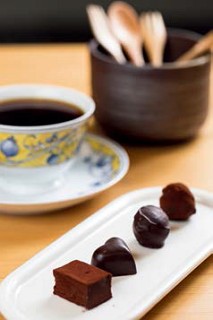 With the passage of time, the dwellings that people live in acquire a rich culture and history that form part of a city's heritage. In recent years, as the Taiwanese have recognized the importance of preserving old homes, a kind of renaissance has begun that has turned rejuvenated old homes into standard-bearers of a new creative age. These homes portray the diverse cultural spirit that has accompanied the urban and economic development. We begin our pedestrian journey in Beitou (北投), a must-visit destination often compared to Hakone, a town on the outskirts of Tokyo.
With the passage of time, the dwellings that people live in acquire a rich culture and history that form part of a city's heritage. In recent years, as the Taiwanese have recognized the importance of preserving old homes, a kind of renaissance has begun that has turned rejuvenated old homes into standard-bearers of a new creative age. These homes portray the diverse cultural spirit that has accompanied the urban and economic development. We begin our pedestrian journey in Beitou (北投), a must-visit destination often compared to Hakone, a town on the outskirts of Tokyo.
Beitou Old Street/market/foot spa → Sado (tea ceremony) and wagashi (Japanese confectionery) at a century-old hot springs hotel → Dessert and coffee at SheMe House→ Taste of Americana at Yangmingshan Sweet Village→ Dinner at a Japanese style home → Search for new creative and cultural industries on Dihua Street 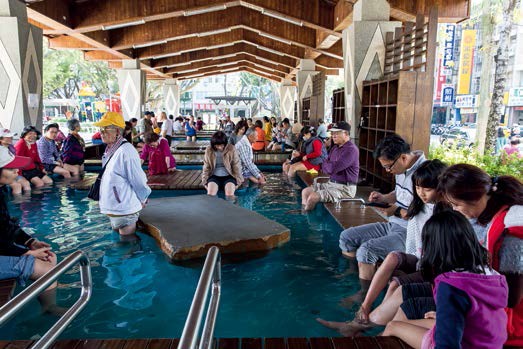 09:00-10:00 Walking Through Beitou's Past
09:00-10:00 Walking Through Beitou's Past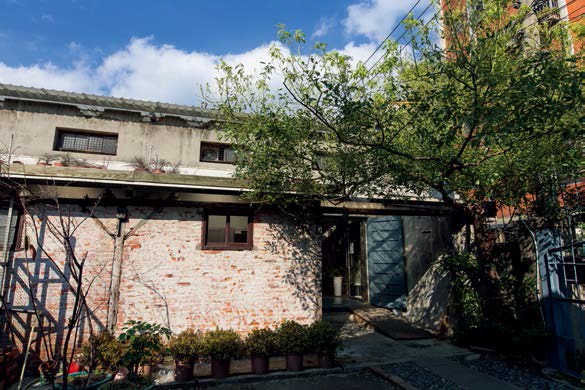 10:30-14:00
10:30-14:00
A Hot Springs Hotel Reborn as a Cultural Center
The Aroma of Coffee Emanating From an Old Barn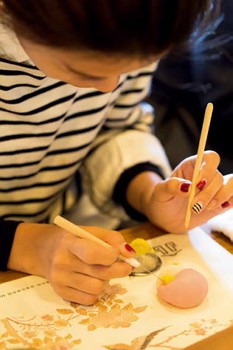
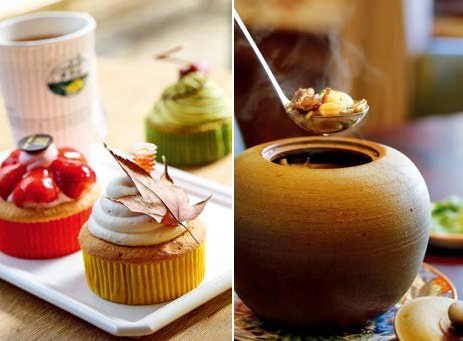 While developing hot springs resorts in Beitou, the Japanese were also establishing Penglai rice foundation stock farms in Zhuzihu, Yangmingshan (陽明山竹子湖). Since peak Penglai rice production was in Beitou and on the Guandu Plain (關渡平原), a Beitou-based private creditpurchase group (similar to a farmers' association) selected the district's Datong Street to host a series of new barns and rice millers in 1938. Farmers sent their rice to these establishments for husking, which is why there are so many rice shops and grain merchants in the surrounding area. Today, these best-preserved examples of traditional granaries in northern Taiwan, have been reborn. One was rented to a cafe that retained the building's tall exterior walls and brick interior dividers, rough concrete surfaces, and wooden roof trusses. Small ventilation windows on the roof that were designed to maximize air circulation and mitigate heat still remain. In this nostalgic setting, a sense of yearning is satisfied by Mandheling coffee with chocolate ganache or Ruisui (瑞穗) honey black tea with Meinung (美濃) banana chiffon cake. It quickly becomes apparent that Beitou's old district is a place to slow down and savor the moment.
While developing hot springs resorts in Beitou, the Japanese were also establishing Penglai rice foundation stock farms in Zhuzihu, Yangmingshan (陽明山竹子湖). Since peak Penglai rice production was in Beitou and on the Guandu Plain (關渡平原), a Beitou-based private creditpurchase group (similar to a farmers' association) selected the district's Datong Street to host a series of new barns and rice millers in 1938. Farmers sent their rice to these establishments for husking, which is why there are so many rice shops and grain merchants in the surrounding area. Today, these best-preserved examples of traditional granaries in northern Taiwan, have been reborn. One was rented to a cafe that retained the building's tall exterior walls and brick interior dividers, rough concrete surfaces, and wooden roof trusses. Small ventilation windows on the roof that were designed to maximize air circulation and mitigate heat still remain. In this nostalgic setting, a sense of yearning is satisfied by Mandheling coffee with chocolate ganache or Ruisui (瑞穗) honey black tea with Meinung (美濃) banana chiffon cake. It quickly becomes apparent that Beitou's old district is a place to slow down and savor the moment.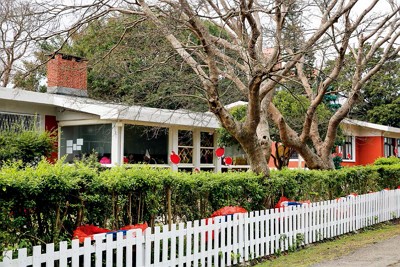 18:30-19:00 Fruit Art on Lunar New Year's Goods Street
18:30-19:00 Fruit Art on Lunar New Year's Goods Street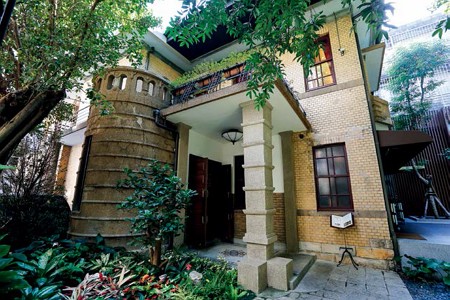
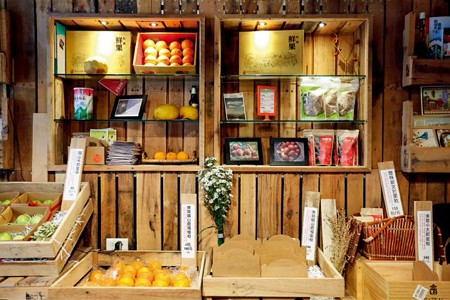 In the book A Thousand Years of Prosperity, Japanese author Jugaku Akiko gave this description of Kyoto, "No matter which direction I walk on these streets, I discover beautiful places. They are neither bustling nor lively; rather, they have a stable, strong presence." We anticipate this kind of future for Taipei. The many stories contained within its old homes are worthy of leisurely exploration and consumption that allow feelings of pleasure to linger.
In the book A Thousand Years of Prosperity, Japanese author Jugaku Akiko gave this description of Kyoto, "No matter which direction I walk on these streets, I discover beautiful places. They are neither bustling nor lively; rather, they have a stable, strong presence." We anticipate this kind of future for Taipei. The many stories contained within its old homes are worthy of leisurely exploration and consumption that allow feelings of pleasure to linger.
Beitou Market 北投市場 Add: 30, Xinshi St. (新市街30號)
Tel (02)2891-0434 Mountain & Sea House 山海樓 Add: 6, Ln. 11, Sec. 2, Zhongshan N. Rd. (中山北路2段11巷6號)
Tel (02)2581-5760 Beitou Museum 北投文物館 Add: 32, Youya Rd. (幽雅路32號)
Tel (02)2891-2318 Website: www.beitoumuseum.org.tw (Chinese) Fflavour Taiwan 豐味果品 Add: 199, Sec. 1, Dihua St. (迪化街1段199號)
Tel (02)2557-6763 SheMe House 拾米屋 Add: 1st Warehouse, 153, Datong St. (大同街153號1號倉庫)
Tel (02)2892-2800 Yannick Sweet Village 亞尼克夢想村 Add: 481, Ln. 4, Changchun St. (長春街4巷481號)
Tel (02)2862-5609

![Taiwan.gov.tw [ open a new window]](/images/egov.png)
